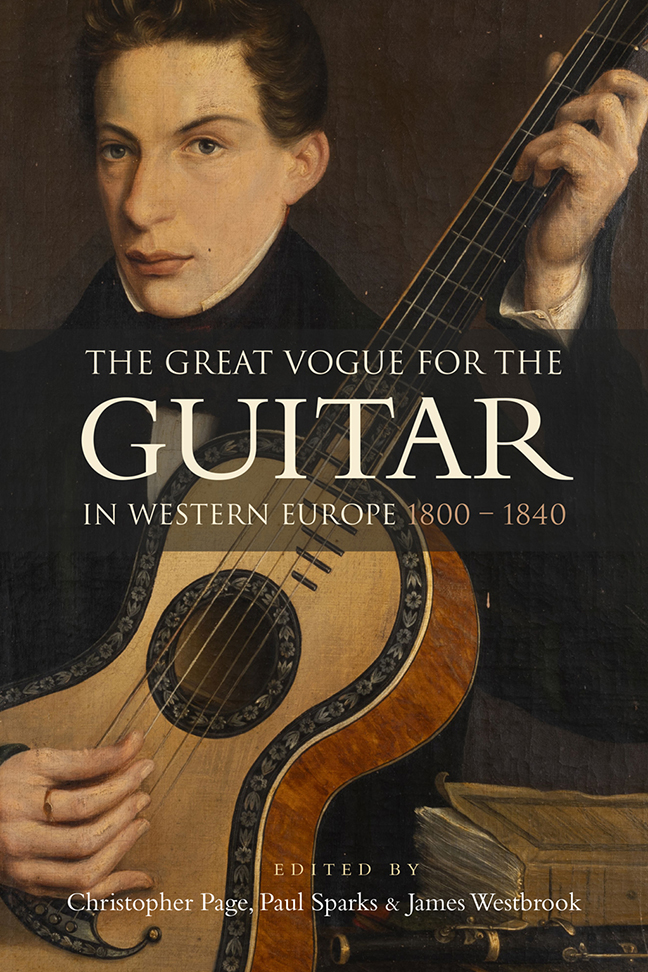Book contents
- Frontmatter
- Dedication
- Contents
- List of Illustrations
- Music examples
- The editors and the contributors
- Foreword
- Acknowledgements
- List of Abbreviations
- Introduction: The Great Vogue for the guitar
- I Contexts
- II The repertoire and its composers
- Appendix: A note on string-making
- Glossary of guitar terms
- Select Bibliography
- Index
9 - Accompanied song
Published online by Cambridge University Press: 10 January 2024
- Frontmatter
- Dedication
- Contents
- List of Illustrations
- Music examples
- The editors and the contributors
- Foreword
- Acknowledgements
- List of Abbreviations
- Introduction: The Great Vogue for the guitar
- I Contexts
- II The repertoire and its composers
- Appendix: A note on string-making
- Glossary of guitar terms
- Select Bibliography
- Index
Summary
During the Great Vogue, amateur guitar players mostly used their instruments to accompany their voices, or those of their friends, rather than to play solo works. Probably more songs with guitar accompaniment were published than solo music or chamber music for guitar, and the print runs, as far as we know, could be substantial. Guitar songs were included in general magazines distributed by subscription, sold individually or hand copied. Almost all famous guitarists wrote and published songs with guitar accompaniment or made guitar adaptations of songs for voice and piano, and opera arias. In short, songs were the primary reason to learn and practise the guitar.
All countries in Europe had pre-existing repertoires of songs with accompaniment for lute, mandora, cittern or guitar, but (as shown in Chapter 1) the volume of material published for voice and guitar in France during the second half of the eighteenth century was without parallel anywhere. What changed around 1800 was, first of all, the instrument itself. In most of Western Europe, the guitar had by then acquired fixed frets and six single strings, including the added lower E string, which extended the register downwards and made the instrument even more suitable for song accompaniment by providing the range for more correct bass lines. The second major change was the rate at which prints of guitaraccompanied songs were issued and the abundance of new genres that flowered. More players also began tuning their guitars to orchestral pitch, while before they had favoured a lower one. This made playing with other instruments easier.
The character of guitar-accompanied song
When exploring the most important of these genres, and some of the composers, on an essentially country-by-country basis, it is important not to draw artificial and anachronistic distinctions between art song and popular song, or between original compositions and arrangements. An inclusive approach will better reveal the workings, the uses and the meaning of the various genres. To survey the repertoire by country, however, is not to underestimate the degree to which composers and guitarists travelled and worked abroad. In France, some of the most interesting and productive guitar composers of the time were Italian or Spanish; the same is true for England, and Italians contributed greatly to the guitar culture of Vienna. Such crossing of boundaries is an essential feature of this period and of guitar-accompanied song.
- Type
- Chapter
- Information
- The Great Vogue for the Guitar in Western Europe1800-1840, pp. 139 - 156Publisher: Boydell & BrewerPrint publication year: 2023



